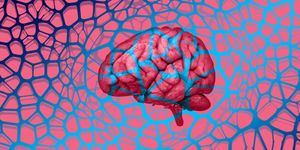Drug development is an exciting field with constant buzz, knowledge expansion, and scientific progression. However, the stories we hear about on the news are traditional successes, and things don’t always work out this way. As scientists, we must acknowledge when it is time to throw in the towel after conducting a proper risk-benefit analysis.
In their Fourth Quarter report, Novartis confirmed that they stopped developing an experimental drug called “branaplam” for Huntington’s disease (HD), stating that the “program [was] discontinued based on an overall assessment of potential benefit-risk from the Phase 2b VIBRANT-HD study.”1 They also wrote a letter to the Huntington’s Disease Community in December of 2022 to inform the community of this pipeline’s cessation.
Their findings from VIBRANT-HD suggest that patients were experiencing peripheral neuropathy, damage to the nervous system, and overall neurotoxicity, which led them to end their development of branaplam for Huntington’s.2 In August of 2022, they noticed nerve damage in a few of their patients who were treated with their drug and suspended dosing with branaplam as soon as they were made aware. They confirmed the discontinuation of this pipeline in the Fourth Quarter report mentioned above, along with the letter to the community.
Huntington’s disease is a debilitating condition causing movement, cognitive, and neurologic disorders. This disease can manifest as muscle problems, difficulty with gait and balance, difficulty learning new information, lack of awareness of one’s behavior, depression, insomnia, and more.3 Branaplam was in the spotlight for a while because it provided hope to many HD patients, as there are no approved treatments and very few drug pipelines for potential drugs for treatment.
Learn more about Huntington’s here:
While this is an unfortunate outcome for a disease with a desperate need for novel treatments, it shows a glimpse into the reality of drug development. The number of iterations and safety profiles these drugs go through is remarkable, and the process must be respected. These checkpoints are in place for a reason, and it is a vital part of the art of drug development. There is no “failing” in drug development, there is only learning more about a drug and a disease state.
References
1https://www.novartis.com/sites/novartis_com/files/2023-02-interim-financial-report-en.pdf
2https://hdsa.org/wp-content/uploads/2022/12/Novartis-VIBRANT-HD-Community-Letter-FINAL-PDF.pdf
3https://www.mayoclinic.org/diseases-conditions/huntingtons-disease/symptoms-causes/syc-20356117



